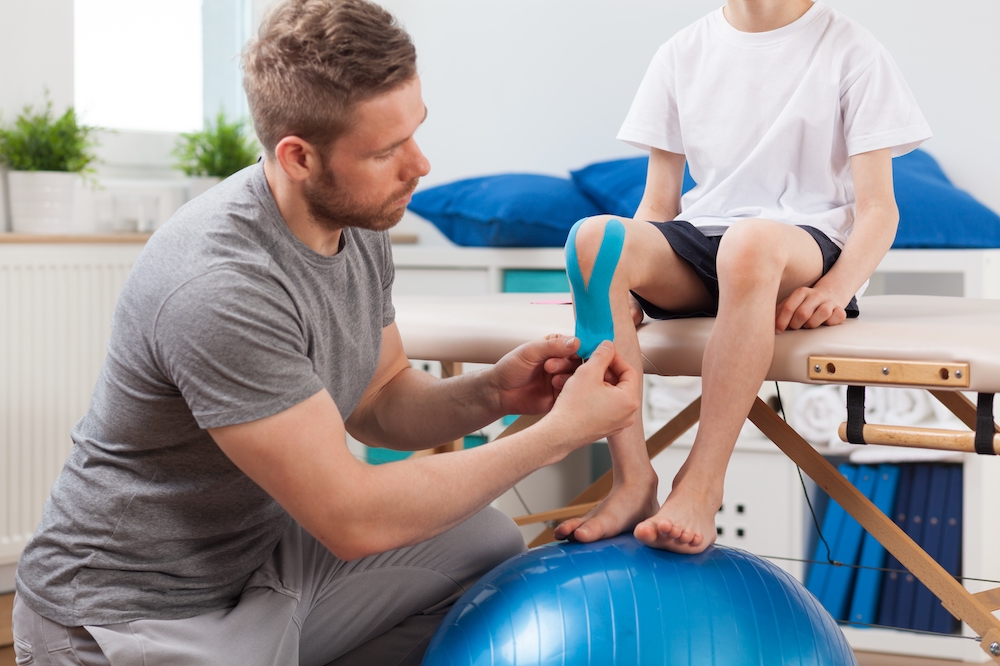
26 Jun Osgood Schlatter syndrome
- Osgood-Schlatter syndrome is a painful knee condition that affects adolescents.
- During a growth spurt, it is thought that the tendon attaching the quadriceps muscle to the knee joint becomes tighter, creating a strain on the growing bone (tibial tuberosity), particularly with physical activities that involve contraction of the quadriceps. E.g. jumping
- Osgood-Schlatter syndrome usually resolves by itself with a period of activity modification, stretches and pain relief. Physiotherapy can help with guiding you through this.
Symptoms of Osgood-Schlatter syndrome
The symptoms of Osgood-Schlatter syndrome depend on the severity of the condition, but may include:
- pain in one or both knees
- pain when straightening the knee joint or full squatting
- pain on running, or going up and down stairs
- pain that eases with rest
- a swollen tibial tuberosity
Treatment for Osgood-Schlatter syndrome
Osgood-Schlatter syndrome usually resolves within 12 months. However, the knee may remain uncomfortable until growing finishes.
Treatment options include:
- activity modification or relative rest – completely avoiding activities that are painful for at least a couple of weeks followed by gradual return to activity guided by symptom levels
- frequent use of icepacks to reduce the local pain and swelling
- stretching and strengthening exercises for the quadriceps, hamstring and calf muscles – a suitable program can be provided by a physiotherapist
- medications, including painkillers and anti-inflammatory drugs
- very rarely, surgery – only in extreme cases and only once growth has ended.

No Comments